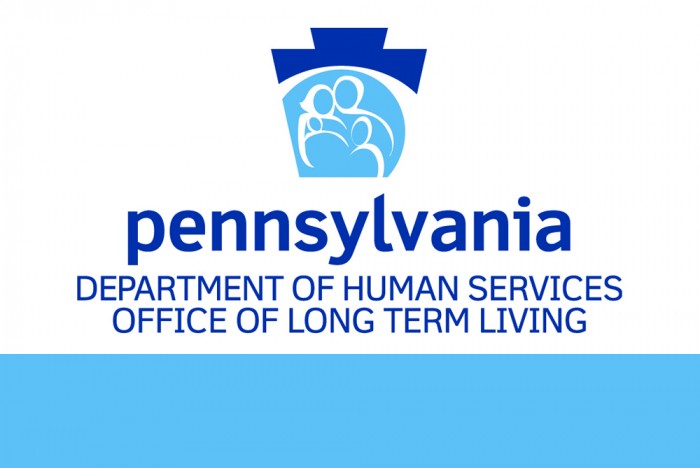Open for Public Comment: Proposed Heightened Scrutiny Service Locations to Be Submitted to CMS
ODP Announcement 22-117 serves to announce a 30-day public comment period on the Residential and Community Participation Support (CPS) service locations that the Office of Developmental Programs (ODP) proposes to submit to the Centers for Medicare and Medicaid Services (CMS) for Heightened Scrutiny. Public comment on each service location will be accepted until 11:59 pm on December 19, 2022.
A summary of ODP’s findings for each Residential and CPS service location that ODP has determined meets one or more of these criteria is available at MyODP and DHS. A description of the process ODP used to identify service locations, complete reviews, and make determinations is also available on both websites.
RCPA Members Streamline and CenClear Partner to Build Out An ICWC Formal Reporting Package
CMS Hospital/Quality Initiative Open Door Forum Scheduled for November 29
The Centers for Medicare and Medicaid Services (CMS) announced that the next hospital/quality initiative open door forum has been scheduled for November 29, 2022, at 2:00 pm. Agenda topics for the call include:
- Announcements & Updates
-
- Hospital Price Transparency Sample Format Announcement
- OPPS/ASC Final Rule Policies
- Rural Emergency Hospital (REH) Policies
- REH Conditions of Participation
- REH Payment
- REH Enrollment
- REH Physician Self-Referral Law Update
- OPPS Payment Policies
- Annual Update
- Remote Behavioral Health Services
- 340B Drugs
- Clinic Visit — Rural Sole Community Hospital Exemption
- Payment Adjustment for Domestically Made N95 Masks
- ASC Payment Policies
- Annual Update
- Non-Opioid Alternatives Under Section 6082 of the SUPPORT Act
- Partial Hospitalization Program Policies
- Organ Acquisition Payment Policies
- Counting Research Organs
- Costs of Potential Organ Donors for Cardiac Deaths
- Open Q&A
To participate: dial 888-455-1397 and reference conference passcode: 5109694.
Instant replay (audio recording) of the call will be available: 888-562-0227 through December 1, 2022. No passcode is needed.
Lakeside Global Institute Training Opportunities on Trauma and Trauma-Informed Care Now Available
Council for State Governments to Hosts Juvenile Justice Webinar on Dec. 8
Creative Solutions and Opportunities to Address the National Juvenile Justice System Staffing Crisis
Please join The Council of State Governments (CSG) Justice Center, Georgetown University’s Center for Juvenile Justice Reform, and the University of Cincinnati Corrections Institute for a facilitated dialogue with national experts regarding the current staffing crisis in juvenile justice systems across the country.
Juvenile justice agencies’ abilities to effectively recruit, hire, and retain qualified staff is currently in crisis. This webinar will bring national attention to a project to address the staffing crisis occurring in juvenile justice systems across the country.
It will also briefly outline the problem, engage with national experts on creative solutions, and highlight an upcoming opportunity to provide input on forthcoming resources to assist the field.
If you have questions, please contact RCPA Policy Director Jim Sharp.
PA Ranks Second in the US for Access to Mental Health Care

An overall ranking 1–13 indicates lower prevalence of mental illness and higher rates of access to care. An overall ranking 39–51 indicates higher prevalence of mental illness and lower rates of access to care. The combined scores of all 15 measures make up the overall ranking. The overall ranking includes both adult and youth measures as well as prevalence and access to care measures. See full article and list of all states’ rankings here.
Wolf Admin Recognizes Family Caregiver Month
Saliva Test for Concussions, Which Penn State Researchers Helped Create, Receives U.S. Patent
Update: ARPA Funding Reporting Portal Initial Reporting Due Date Extended to February 2023
The Office of Long-Term Living’s (OLTL) American Rescue Plan Act (ARPA) Funding portal was launched September 30, 2022. Since the launch of the ARPA Funding Reporting portal, OLTL has received a higher than anticipated volume of portal access change requests, causing a delay in access to the portal. OLTL has also identified portal functionality and data discrepancy issues for which they are working with the Information Technology (IT) Development team to implement resolutions. As OLTL works to resolve the issues, the ARPA Funding Reporting Portal initial reporting due date of November 30, 2022, is being extended to February 28, 2023. Please reference the chart below for updated bi-annual reporting periods.
| Report Period | Due Dates |
| 07/01/2021 – 12/31/2021
01/01/2022 – 06/30/2022 07/01/2022 – 12/31/2022 |
2/28/2023 |
| 01/01/2023 – 6/30/2023 | 8/30/2023 |
| 07/01/2023 – 12/31/2023 | 2/28/2024 |
Portal Training & Support
Providers can use the DHS ARPA Reporting Portal User Guide to help navigate the new reporting portal. For portal access requests or questions, please contact the OLTL Provider Helpline at 800-932-0939, Option 2, or via email.

















